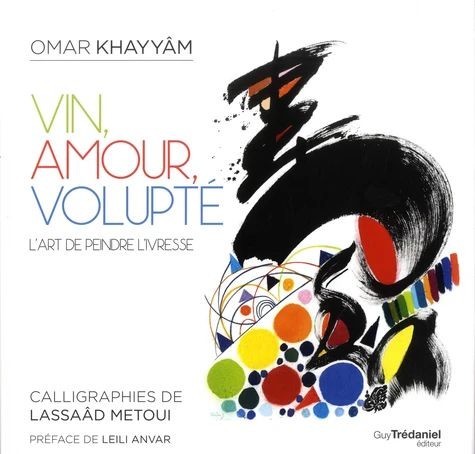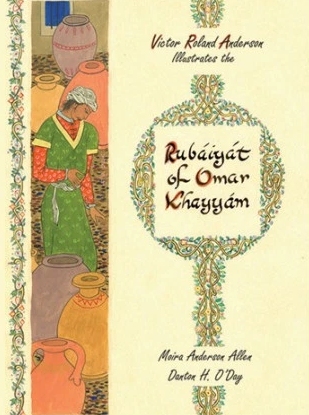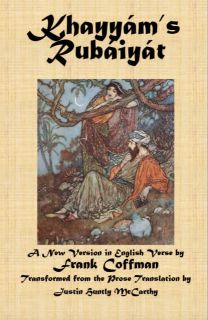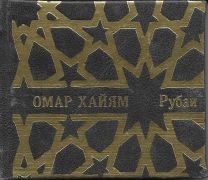Rubaiyat. Omar Jayam. Edward FitzGerald. Ilustraciones de Willy Pogány. Traducción de Victoria León. Prólogo de Luis Alberto de Cuenca. Madrid, Reino de Cordelia, 2019. – 124 p.; illustrations; 19 x 15,5 cm. – (Los versos de Cordelia). – ISBN: 978-84-16968-94-7.
75 quatrains
– Índice, p. 9
– Omar Jayam, poeta de todos, p. 13
– [Rubaiyat], p. 19 .
Omar Khayyâm. Vin, amour, volupté. [Trad. Charles Grolleau]. Calligraphies de Lassaâd Metoui ; préface de Leili Anvar. Paris, Trédaniel, 2019. – 261 p.; 31 x 31 cm. – ISBN: 9782813221452.
126 quatrains.
Contents
– En appendice, “Carnets de voyage conc¸us au British Museum”, et “Les courbes de l’ivresse”.
– Préface, p. 8
– Introduction, p. 14
– Les quatrains d’Omar Khayyâm — Carnets de voyage conçus au British Museum, p. 233
– Galerie imaginaire, p. 241
– Annexes
Victor Roland Anderson Illustrates the Rubaiyat of Omar Khayyam. [Translated by Edward FitzGerald]. Edited by Danton O’Day and Moira Anderson Allen. [S.l.], Blurb, 2019. – 36 p.; 15 full page illustrations in colour; 25,5 x 20 cm. – ISBN: 978-0-46-425914-5.
75 quatrains
Khayyám’s Rubáiyát. A new version in English verse by Frank Coffman. Transformed from the prose translation by Justin Huntly McCarthy. [S.l.], Bold Venture Press, 2019. – xxvii, 86 p.; With portraits in b&w of E. Heron-Allen, J. Huntly McCarthy and R. le Gallienne; 23 x 15 cm. – ISBN: 9781097209286.
466 quatrains.
Introduction, p. i
[Rubáiyát], p. [1]
Glossary, p. 85.
Omar Chajjam. Rubai. Cecilia Banu. Moskou; St. Peterburg, Letnii Sad; Universitetskaia Kniga, 2019. – 145 p.; 10 x 9 cm. – ISBN: 978-5-98856-398-3.
104, 34 quatrains. – With 34 pages text in Persian.
Contents
– Omar Chajjam, [p. 3]
– O taynakh bytiyak, p. 7
– O neprochnosti vsego zemnogo, p. 44
– Ob ushedshikh godakh i druzyakh, p. 74
– Vino, vesel’ye, vol’nodymstvo, p. 82
– Vino, lyubov’, gryst’, 101
– Vino i umerennost’ p. 120
– Vino i litsemeri, p. 125|
– K illyustratsiyam, p. 145
Omar Khayyám on theodicy. Irreconcilability of the transcendental and the imminent. Mehdi Aminrazavi
In: Journal of Islamic Philosophy, 11 (2019), p. 33-44.
Abstract
The philosophical and theological thoughts of Omar Khayyām, the Persian mathematician, astronomer, and the likely author of the Rubāʿiyyāt (Quatrains), has remained a neglected area of scholarship. Much of the scholarship on Khayyām in the last few centuries has primarily been focused on his Quatrains, and to a lesser extent, on his views on mathematics and geometry. Despite Khayyām’s significance, his six philosophical treatises were not even edited nor published until recently, which is perhaps why they have remained relatively obscure. In this article, Khayyām’s dual views on theodicy are presented notwithstanding that he is the only figure we know of in the annals of Islamic intellectual history who adopted two opposite positions—simultaneously— with regard to the problem of evil. This article postulates that Khayyām’s dual positions on theodicy can only be understood if they are placed in their proper contexts; philosophically, theodicy is explainable, while on a more experiential level it is not. Conclusions may vary, depending on whether we are looking at the presence of evil from a transcendental or an imminent perspective.
The Impact of Power and Ideology on Edward FitzGerald’s Translation of the Rubáiyát. A Postcolonial Approach. Bentolhoda Nakhaei
In: TranscUlturAl, 11 (2019) 1, p. 35-48
Abstract
This paper analyzes the issues raised by the change of ideology and the underlying meanings in five FitzGerald’s translations of Khayyám’s quatrains according to the theories of certain translation scholars such as André Lefevere and Antoine Berman. With regard to the fact that the British translator has given a harmonizing beauty and an epicurean flavor of his own to Khayyám’s Rubáiyát, could it be claimed that translator’s voice is louder than the author’s? From the transcreation point of view, one could wonder whether FitzGerald did maintain the intent, style, tone, and content of the Persian quatrains. Do FitzGerald’s translations evoke the same emotions and does it carry the same implications in English as Khayyám’s Rubáiyát does in Persian. In general, from a postcolonial perspective, FitzGerald’s five English translations could offer interesting and fertile ground for investigating the effects of power relationship between the colonizer and the colonized text during the Victorian age in England.
Edmund Dulac’s Book Graphics and the Problem of Orientalism in British Illustration of Edwardian Era and the Second Decade of XXth Century. Dmitry Lebedev.
In: Proceedings of the 3rd International Conference on Art Studies: Science, Experience, Education. Atlantis Press, November 2019.
Summary
At the turn of the XIX-XX centuries, Europe-wide enthusiasm about the Eastern art, which varied from Iranian miniature to Japanese engraving, led to the popularity of many artists whose works were impacted by Orientalism. In these circumstances, large London publishers, annually producing luxury gift books for Christmas, trying to adjust to the mass excitement around the Eastern art, invited young and promising graphic artists to illustrate these publications. Among the invited artists who actively cooperated with such publishers was the outstanding French-English illustrator Edmund Dulac (1882-1953). The article reveals one of the key aspects of Dulac’s oeuvre. The author considers artist’s attempts to convey the thematic and stylistic originality of the Oriental art in the context of book illustration of the Edwardian era and the second decade of XXth century. The work traces Edmund Dulac’s creative career and examines the cycles of his illustrations in order to identify both typical and original stylistic and compositional techniques used by the author to create works in the spirit of orientalist aesthetics. The article also deals with oriental works of Dulac’s contemporaries and analyses them in comparison with each other.
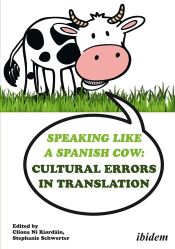
How Khayyám Got Lost in Translation. Bentolhoda Nakhaeï.
In: Speaking like a Spanish Cow: Cultural Errors in Translation. Clíona Ní Ríordáin, Stephanie Schwerter (eds.). Stuttgart : Ibidem Press, 2019. 368 p.
ISBN: 9783838272566.
Summary:
What is a cultural error? What causes it? What are the consequences of such an error? This volume enables the reader to identify cultural errors and to understand how they are produced. The meta-translational problem of the cultural error is explored in great detail in this book. The authors address the fundamental theoretical issues that underpin the term. The essays examine a variety of topics ranging from the deliberate political manipulation of cultural sources in Russia to the colonial translations at the heart of Edward FitzGerald’s famous translation The Rubáiyát of Omar Khayyám. Adopting a resolutely transdisciplinary approach, the seventeen contributors to this volume come from a variety of academic backgrounds in music, art, literature, and linguistics. They provide an innovative reading of a key term in translation studies today.

